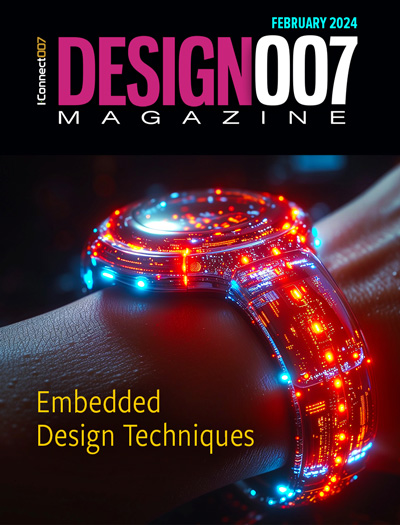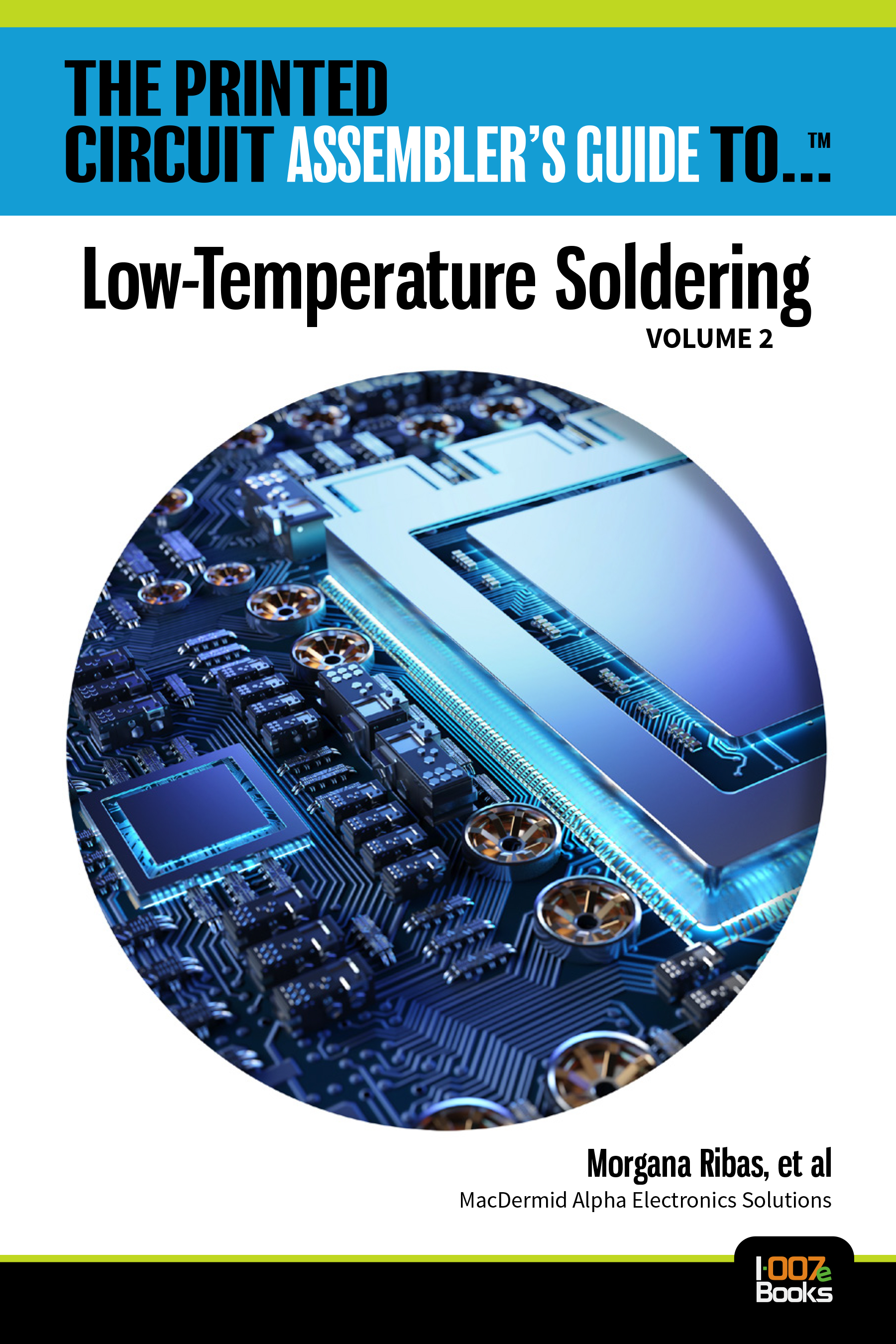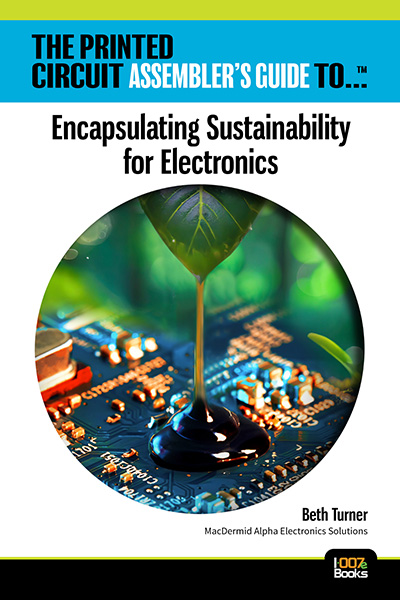-

- News
- Books
Featured Books
- design007 Magazine
Latest Issues
Current Issue
Level Up Your Design Skills
This month, our contributors discuss the PCB design classes available at IPC APEX EXPO 2024. As they explain, these courses cover everything from the basics of design through avoiding over-constraining high-speed boards, and so much more!

Opportunities and Challenges
In this issue, our expert contributors discuss the many opportunities and challenges in the PCB design community, and what can be done to grow the numbers of PCB designers—and design instructors.

Embedded Design Techniques
Our expert contributors provide the knowledge this month that designers need to be aware of to make intelligent, educated decisions about embedded design. Many design and manufacturing hurdles can trip up designers who are new to this technology.
- Articles
- Columns
Search Console
- Links
- Events
||| MENU - design007 Magazine
I-Connect007 eBook Introduction: The Evolving NPI Process
August 25, 2022 | I-Connect007 Editorial TeamEstimated reading time: 2 minutes
The following is an excerpt from the introduction to the I-Connect007 eBook The Electronics Industry's Guide to... The Evolving PCB NPI Process.
Thanks to marketing and advances in technology, we have all come to expect that the electronic products we buy will be closely aligned to our individual and specific lifestyle or business requirements. This expected variability, in personal function and style, as well as regulatory compliance and a changing global economic landscape, has made designing and producing new products a challenging prospect. And, on top of the resulting “high-mix, low-volume” production cycles, increasingly more products contain electronic components in varying levels that heighten the complexity of design and manufacturing.
This situation means that printed circuit board (PCB) manufacturing has shifted from a focus that’s primarily driven by the time it takes to build a single board on a single dedicated line to focusing on the changeover time between varying products on a single line or between multiple lines.
As part of this shift, PCB manufacturers moved away from the traditional practice of selecting pick-and-place lines from multiple vendors to choosing a single vendor for their machine lines. And an unintended result is that using the one vendor’s machine software became the primary way to optimize the line because the key factors were known, and manufacturers no longer had to optimize across multiple, differing machine platforms.
Then surface mount technology (SMT) came along, and these machines had greater feeder capacity. They were able to cover more types of component packages. SMT machines were more modular than pick-and-place machines so they could be put together to create the overall placement line. Despite this move to SMT, some pick-and-place machines, especially if they were legacy machines that still functioned well and were too expensive to replace, were kept in a manufacturing line. So, a single factory still could have at least two, or more, different machine vendors across all lines. This made optimizing all the machines across a line or multiple lines complicated because they weren’t speaking the same software language.
Because this mixed-vendor setup is difficult to configure, companies such as Valor and Tecnomatix, both now part of Siemens Digital Industries, stepped in to deliver optimization strategies for these mixed vendor lines. One of the most popular mixed-vendor lines historically was the Fuji CP-Universal GSM line. However, most electronics assembly lines back then were typically mixed vendor of some type.
To download The Electronics Industry's Guide to... The Evolving PCB NPI Process, click here.
Suggested Items
KIC’s Miles Moreau to Present Profiling Basics and Best Practices at SMTA Wisconsin Chapter PCBA Profile Workshop
01/25/2024 | KICKIC, a renowned pioneer in thermal process and temperature measurement solutions for electronics manufacturing, announces that Miles Moreau, General Manager, will be a featured speaker at the SMTA Wisconsin Chapter In-Person PCBA Profile Workshop.
The Drive Toward UHDI and Substrates
09/20/2023 | I-Connect007 Editorial TeamPanasonic’s Darren Hitchcock spoke with the I-Connect007 Editorial Team on the complexities of moving toward ultra HDI manufacturing. As we learn in this conversation, the number of shifting constraints relative to traditional PCB fabrication is quite large and can sometimes conflict with each other.
Standard Of Excellence: The Products of the Future
09/19/2023 | Anaya Vardya -- Column: Standard of ExcellenceIn my last column, I discussed cutting-edge innovations in printed circuit board technology, focusing on innovative trends in ultra HDI, embedded passives and components, green PCBs, and advanced substrate materials. This month, I’m following up with the products these new PCB technologies are destined for. Why do we need all these new technologies?
Experience ViTrox's State-of-the-Art Offerings at SMTA Guadalajara 2023 Presented by Sales Channel Partner—SMTo Engineering
09/18/2023 | ViTroxViTrox, which aims to be the world’s most trusted technology company, is excited to announce that our trusted Sales Channel Partner (SCP) in Mexico, SMTo Engineering, S.A. de C.V., will be participating in SMTA Guadalajara Expo & Tech Forum. They will be exhibiting in Booth #911 from the 25th to the 26th of October 2023, at the Expo Guadalajara in Jalisco, Mexico.
Intel Unveils Industry-Leading Glass Substrates to Meet Demand for More Powerful Compute
09/18/2023 | IntelIntel announced one of the industry’s first glass substrates for next-generation advanced packaging, planned for the latter part of this decade.


